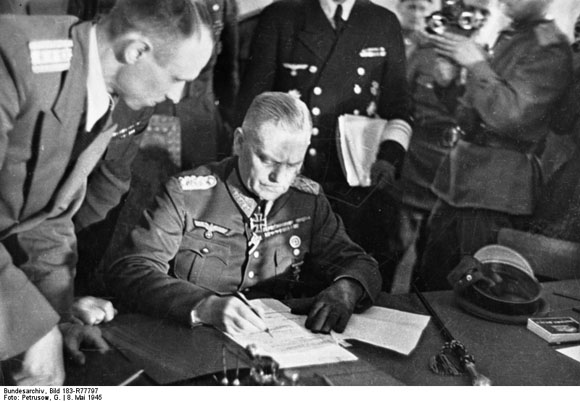Source

Source: Photographer: Georgi Petrussow, Bild 183-R77797, Bundesarchiv.
After naming Karl Dönitz his successor as Reich President, Hitler committed suicide on April 30, 1945. In the following days, German troops all over Europe surrendered to the Allies, beginning in Italy on May 2. That same day, the Red Army conquered Berlin. On May 4, troops in northwestern Germany, the Netherlands, and Denmark surrendered; on May 6, they did the same in Central Europe. Dönitz had started negotiations with the Western Allies, hoping to reach a separate peace. The Western Allies did not agree to this, however. Rather, they stuck to their agreement, which stipulated Germany’s unconditional surrender – to all Allied forces – as the only acceptable end to the war. Finally, General Alfred Jodl signed the Act of Military Surrender at General Dwight D. Eisenhower’s headquarters in Reims on May 7. The next day, General Keitel signed a similar document at the Soviet headquarters in Berlin-Karlshorst. World War II had ended in Europe.

Source: Photographer: Georgi Petrussow, Bild 183-R77797, Bundesarchiv.